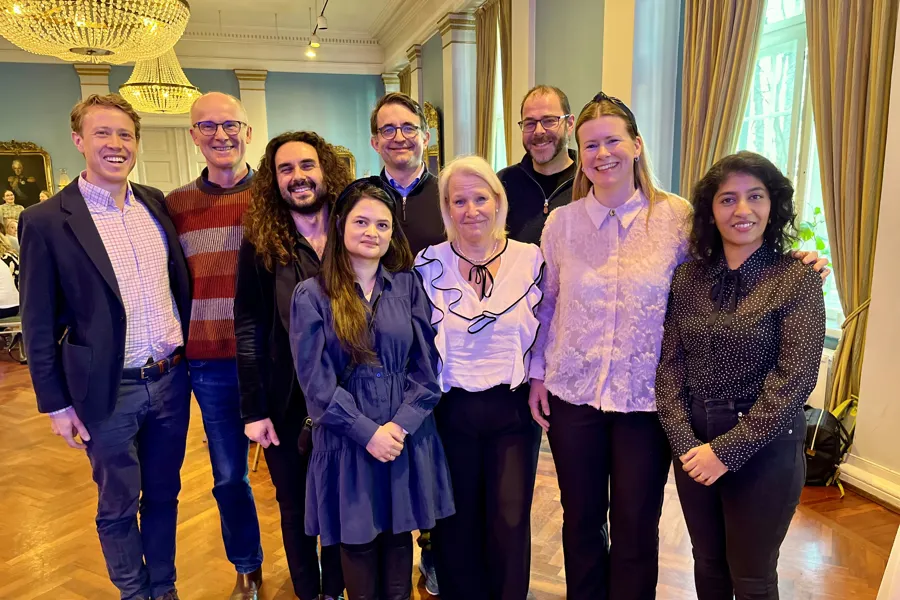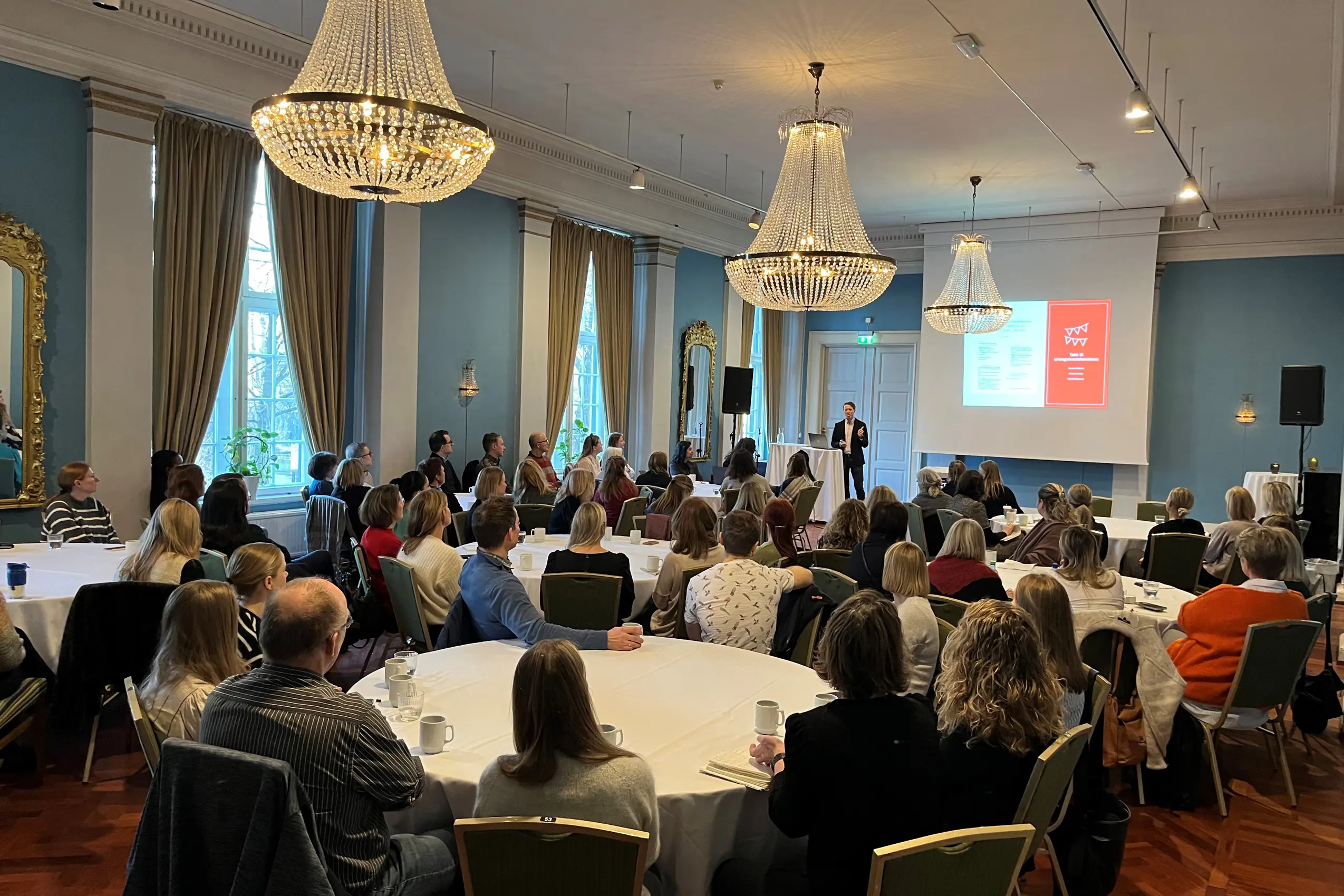An Educational Day for Research Personnel in Cardiovascular and Kidney Studies
NorTrials Cardiovascular recently invited research personnel from across the country to Oslo to meet, exchange experiences, and network. It turned into an informative day for all.

- There is a lot of exciting progress in our field with so many promising studies that will hopefully contribute to changing treatments in the years to come, began Peder L. Myhre, the center leader at NorTrials Cardiovascular at AHUS. The planning team which consisted of coordinator Marit Holmefjord Pedersen, study nurse Linda Mari Godem, and doctor Hamza Nahoui, put together a professional program designed to leave the audience wanting more.
Around 70 research personnel specializing in cardiovascular and kidney diseases, from both primary and specialist healthcare services attended the seminar at the prestigious venue, Gamle Logen. Attendees learned about how the NorTrials center at Ahus organized, pros and cons of participating in industry-funded clinical trials, status updates from industry representatives , and got concrete examples of how to manage the monitor role, to name a few of the topics presented.

Dutch Networking Example
Astrid Schut from WCN (Werkgroep Cardiologische centra Nederland) presented a great example of how professional networks have been built in the cardiovascular field in her home country. WCN is a research network in cardiology, consisting of 49 member sites and 495 cardiologists. Currently, they are involved in 58 studies in the Netherlands, 80% of which are industry-funded.
- It’s about coordinated procedures to ease the startup of studies, such as a common process for feasibility, confidentiality agreements, and contract signing, said Schut.
Groundbreaking Norwegian Study
Dan Atar, a cardiologist and research leader at Oslo University Hospital, with extensive experience in industry-funded studies, reminded the audience that Norway’s greatest achievement in the cardiovascular field was the 4S study (Scandinavian Simvastatin Survival Study), which demonstrated that lowering LDL cholesterol in the blood could extend survival in patients with coronary heart disease.
- Before this study, no one had shown that cholesterol lowering could influence lifespan and morbidity. And do you know how it came about? Professor Terje Rolf Pedersen contacted MSD and proposed a study using their statin and placebo. He received a standing ovation when he presented the study findings at the American Heart Association conference in 1994. How many of you have ever seen a standing ovation at a conference? In an interview with The Lancet in 2010, he said, "Immediately after the 4S presentation, I felt that it went quite well. However following this study, I was pulled and dragged in all directions by people who wanted a bit of me. It was a once-in-a-lifetime experience," an enthusiastic Atar shared.
He also took the opportunity to invite everyone to the 25th anniversary of the 4S study, which will take place on April 8 from 16:00-18:00 in "Rødt auditorium" at Ullevål hospital.
What Is a Monitor, and What Do They Do?
Do you know what a monitor is? What is the difference between a monitor and a Clinical Research Associate (CRA), and what are their actual tasks? There is a large overlap between the terms, which are often used interchangeably, but a CRA can, in some cases, have an expanded role beyond monitoring. A monitor/CRA is the link between the sponsor and the study site, ensuring that the data collected in the study database matches the documentation at the hospital. Nina Hagen, a senior CRA at ICON, provided an introduction to this. She is currently 100% contracted to AstraZeneca and is a monitor/CRA in a multi-center study for them.
National Role as Study Nurse Coordinator
Novo Nordisk has recognized the value of knowledge exchange across study sites and, as a result, has created a national coordinator position for study nurses. Linn Lindstrøm, a study nurse at Rikshospitalet, and national coordinator (NSC) in the HERMES study, shared her experience.
- It’s mostly the nurses who run the studies. My role as a national coordinator is to be the point of contact for study nurses at all sites in Norway. We organize physical meetings with workshops at the start of a study, go through all the portals that need to be logged into, and discuss any challenges. This helps reduce errors, minimizes frustration, and ensures that CRAs don’t receive repeated questions about the same issues, Lindstrøm said.
How Tough Is It to Be New and Alone?
Have you ever been a newly hired research nurse and not been entirely sure what was expected of you? Study nurse Karoline Fjørtoft at St. Olav’s Hospital advocated for job shadowing at other sites to learn from more experienced study personnel. She herself had the opportunity to hospitalize at Ahus and Rikshospitalet for a few days as a new study nurse, gaining experience with the screening process, attending visits, and reviewing digital tools.
- It’s especially important for those who don’t have a large research environment at their own workplace. If we build networks between research personnel, we make each other better and contribute to creating engagement around participation in clinical trials. And that’s needed, because doctors couldn’t do it without us, Fjørtoft reminded the audience.
She also took the opportunity to recommend NorCRIN’s national course for study nurses, which covers a wide range of tasks related to the study nurse role.
- There will be a new opportunity this spring, Fjørtoft said.
Valuable Workshops
After the presentations, participants were divided into groups to discuss practical aspects of conducting clinical trials.
- The discussions were lively, and the final summary showed that much is done similarly across the country, the same challenges are recurring, and many people feel a bit isolated in their work with clinical trials. In that context, gathering with others in the same situation to receive motivation and make new connections is extremely valuable, said Marit Holmefjord Pedersen.
Concrete tips were also shared, both on how to find the right patients for clinical trials and how to retain them in the studies.
- The day ended with a lovely dinner – a very successful event, said Pedersen contentedly.
The article was translated from Norwegian to English using ChatGPT and edited by Signe Fretland and Ingrid Bånerud.